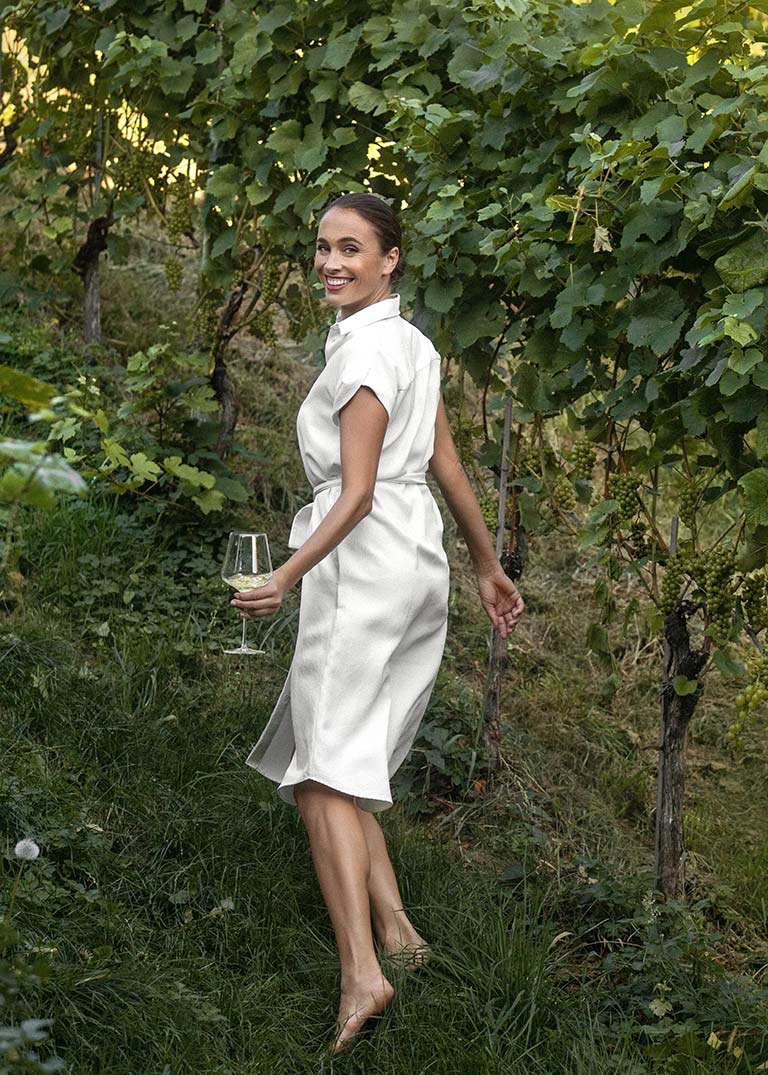“The Tuscany of Austria”

There are areas that are simply magical, fairytale-like. Or even a little enchanted, almost as if from another world. This is also true of southern Styria, which literally grounds you with its gently rolling hills, forested peaks and fertile vineyards. There is something almost meditative about the peace and tranquillity that this vineyard-green landscape radiates. One feels a deep sense of happiness and pure, inner peace here.
Kreuzberg
Especially the area around the 633-metre-high Kreuzberg with its Mediterranean-Illyrian climate, long, warm summer days and cool nights, reinforces the impression of being in a place of historical power. Already the Illyrians, Celts and later the Romans cultivated their vines here.
Even today, Southern Styria, the “Styrian Tuscany”, as it is often called, is a piece of intact nature and above all: a landscape of enjoyment. With numerous “Hauben” restaurants and rustic “Buschenschänken” (wine taverns). A hidden paradise from a time seemingly long gone – in the here and now. A place for the senses. A home for gourmets and wine lovers.
It is precisely here, in this great white wine region, which lies at “eye level” and on the same 46th-47th parallel as the Montrachet, Chablis, Sancerre or South Tyrol growing regions, that “hidden champion” Thomas Rothschädl creates SIGNUM BLANC. Every sip tells the story of its origin and provenance. Ripe, elegant wines with fine fruit, balanced acidity and a mineral note on the finish. The result of an ingenious terroir and a congenial winemaker.

Summer on the Kreuzberg
Geographical location and climate
Illyrian climate in southern Styria
The Illyrian climate of southern Styria is an Alpine-Adriatic climate and prevails in Austria’s southeast and in parts of Slovenia. Protected by the Alpine barrier, the summers there are still as you remember them as a child: warm, sunny and endless. These summers transition very slowly into a golden autumn. Warm days, cool nights in early summer, a summer sun average of over 20 degrees ensure that the wine can develop optimal fruit.
Illyrian climate brings more humidity than a Mediterranean climate. As it grows, the vine loves the showers and thunderstorms that the Adriatic occasionally sends up. In some phases of the summer, the wine in southern Styria also enjoys a Pannonian climate, dry and with little precipitation. The grapes dry out and stretch out towards the sun.
Illyrian climate is a gifted climate, rich in variety and unpredictable. In this respect, Styrian winegrowers have a tradition of maintaining a good relationship with the weather god. They are rewarded with magnificent vintages.




